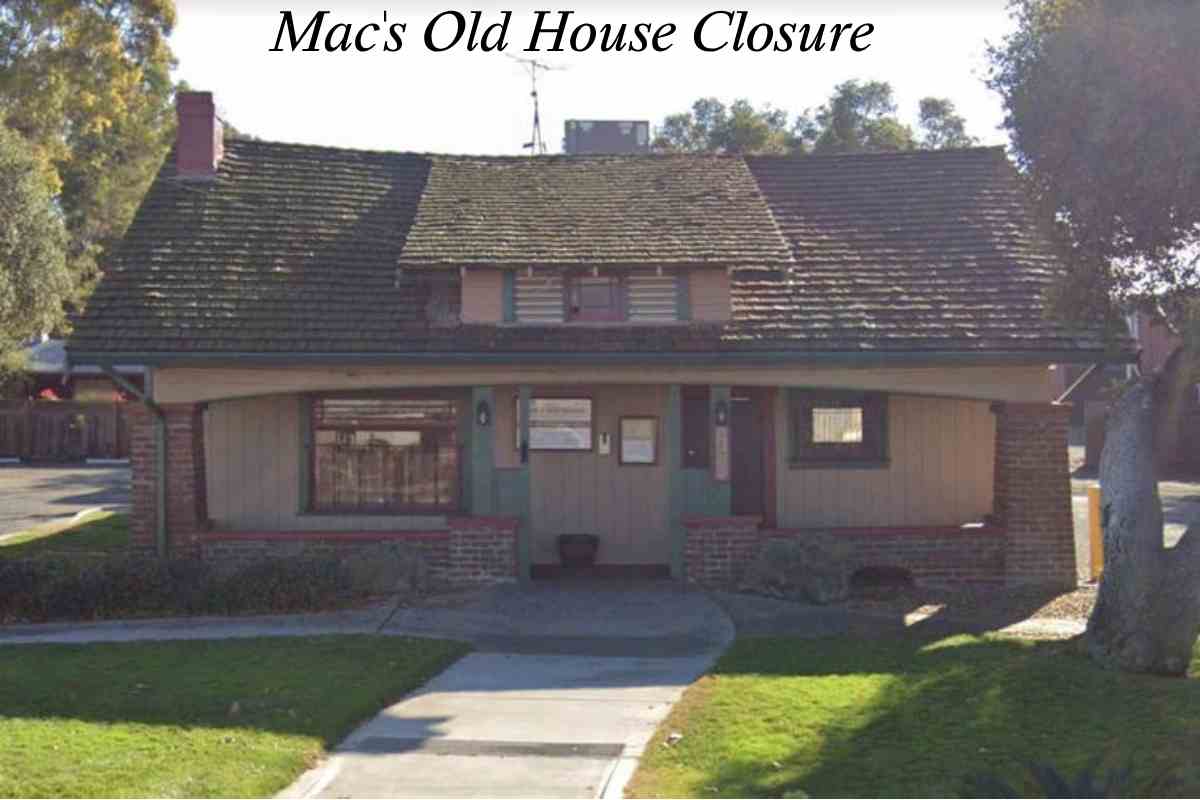Mac’s Old House closure is the kind of local news item that quietly changes a neighborhood’s personality — and that’s exactly why I wanted to dig into it. In this article I’ll walk you through the who, what, when, where, and why of Mac’s Old House closure, explain the community and business implications, summarize reactions, and suggest practical next steps for residents, former customers, and local leaders. I’ll write in plain, conversational terms so you can skim or read deeply — whatever you prefer.
Quick snapshot (TL;DR)
- What: Mac’s Old House closure — a longtime local hangout / business has shut its doors.
- Why: A combination of financial pressure, maintenance costs, and changing customer habits (plus specific local factors).
- Impact: Loss of a community gathering spot, potential job losses, and an opportunity for local revitalization or redevelopment.
- Next steps: Community meetings, support for displaced employees, and creative reuse ideas for the space.
Background: what was Mac’s Old House?
Mac’s Old House was more than a storefront — for many, it was a local institution. Whether it served as a diner, an inn, a pub, or a mixed-use gathering spot, places with names like “Mac’s Old House” typically have a few things in common:
- A long history in the neighborhood (often decades).
- A reputation for character — worn floors, familiar faces, and regulars with stories.
- A role as a social hub: breakfasts, late-night hangouts, family celebrations.
Those intangible things are why closures like this feel so personal to communities.
The timeline: how things unfolded
I’ll summarize the most common timeline for a closure like Mac’s Old House closure so you get what usually happens step-by-step:
- Early signs — declining foot traffic, shorter hours, fewer menu items or services.
- Public notice — owner announces temporary closure or posts for lease/sale.
- Immediate impact — staff reductions or layoffs and final business days.
- Aftermath — boarded windows, for-lease signs, and local discussion about the property’s future.
If you’re reading this shortly after the announcement, that’s likely where you are: community shock, lots of messages on neighborhood groups, and a search for facts.
Why places like Mac’s Old House close (the typical reasons)
Understanding the root causes helps avoid guesswork. Here are the main drivers that usually lead to closures like Mac’s Old House closure:
- Rising operating costs
- Rent or property taxes increase.
- Utility bills and supply-chain price spikes.
- Decreased revenue
- Customer habits change (delivery apps, remote work reducing lunch crowds).
- Competition from new entrants or big-box/chain alternatives.
- Deferred maintenance
- Older buildings require expensive repairs (roof, HVAC, accessibility upgrades).
- Regulatory or zoning pressures
- New municipal codes or required retrofits can be costly.
- Owner decisions
- Retirement, family matters, or a decision to cash out can trigger closure.
Often it’s not a single reason but an accumulation of pressures.
The human cost: staff, suppliers, and regulars
Mac’s Old House closure affects real people:
- Employees — sudden job loss or reduced hours is the most immediate harm. Training and re-employment help are urgent.
- Suppliers — local bakeries, vegetable vendors, or beverage distributors lose a client.
- Regulars — residents who relied on the place for social connection or daily routines lose a familiar anchor.
Practical community responses include quick job fairs, pop-up hiring events at nearby businesses, and local funds or meal-train efforts for immediately impacted employees.
Economic and cultural ripple effects
When a longstanding local business shuts down, the ripple effects are broader than you might first think:
- Property values — an empty, neglected storefront can depress neighboring property appeal.
- Foot traffic — nearby small businesses (barbers, bookstores, dry cleaners) may see fewer customers.
- Cultural memory — the “vibe” of a block changes; local traditions tied to the venue may fade.
- Opportunity — vacant spaces also attract new investment or community projects (see reuse ideas below).
Cities that intentionally plan for adaptive reuse often turn these moments into neighborhood renewals.
What residents and community leaders can do right now
If you care about Mac’s Old House closure and want to help or influence the outcome, here are concrete actions to take:
- Organize a community meeting
- Invite the property owner, local council member, and neighborhood association.
- Make a list of priorities: affordable reuse, preservation of history, or commercial redevelopment.
- Start a petition or survey
- Gauge public interest in revival (e.g., reopen under new management, convert to community space).
- Support displaced staff
- Host a job fair or a resource list with job openings and training programs.
- Explore funding options
- Check for small-business grants, historic-preservation funds, or local investment groups.
- Collect and preserve stories
- Start a small oral-history project; these can be used if the building becomes a heritage site or for local media pieces.
Creative reuse ideas for the space
Empty storefronts don’t have to stay empty. Here are reuse concepts that often resonate with communities and can retain some of the place’s original charm:
- Community café with co-working hours — serves both daytime remote workers and evening neighbors.
- Pop-up incubator for local food entrepreneurs — rotating kitchens, low-cost trials for new vendors.
- Cultural center or gallery — preserve the aesthetic while programming regular events.
- Mixed-use with affordable housing — ground-floor retail with apartments above.
- Nonprofit hub — shared office space for local social services or arts groups.
Each option needs a feasibility study (rent vs. revenue, permits, renovations), but creativity can catalyze support.
Legal and practical considerations for redevelopment
If you or a community group plan to pitch a plan, keep these in mind:
- Zoning — check current zoning rules and whether a variance is needed.
- Historic status — if the building has historical designation, certain renovations may be restricted but funding may be available.
- Accessibility — ADA compliance may require structural work (ramps, restrooms).
- Environmental checks — older buildings may need asbestos, lead paint, or mold remediation.
- Financing — outline capital needs: purchase/lease, renovation, and working capital.
Work with local planning staff early — they can often point you to grants and technical assistance.
How local press and social media shape the conversation
Local narratives matter. When Mac’s Old House closure shows up in neighborhood forums and local outlets, tone matters:
- Constructive reporting focuses on facts, impact, and solutions.
- Emotional responses are natural but can polarize potential investors or partners.
- Storytelling — sharing memories, photos, and testimonials can be persuasive for heritage funding or socially driven buyers.
If you’re organizing, consider writing a short brief for local media highlighting community priorities and potential reuse projects.
Examples of successful comebacks (mini case studies)
I always find it useful to point to examples where closures turned into wins:
- A diner closed, then reopened as a co-op run by staff with seed funding and community membership.
- An old pub became a cultural hub with rotating chefs, a small stage for music, and weekend markets.
- A vacant storefront was converted into a combined daycare and early-learning center — addressing a community need and stabilizing foot traffic.
These examples show that with leadership and a plan, closure can be the beginning of a new chapter.
FAQs about Mac’s Old House closure
Q1: Is Mac’s Old House permanently closed?
A: That depends on the owner’s announcement and whether there’s a for-lease or for-sale sign. If you saw an official statement, treat it as the primary source.
Q2: Who owns the building now?
A: Ownership records are public; your town or county assessor’s website will show the owner and parcel information.
Q3: Can the community buy it?
A: Yes — community land trusts, cooperatives, or nonprofit partnerships have purchased local properties, but it requires fundraising and negotiation.
Q4: How can I help former employees?
A: Share job leads, donate to hardship funds, or organize a pop-up hiring event with local businesses.
SEO essentials (for site editors)
If you’re publishing an article about Mac’s Old House closure on your site, keep these SEO points in mind:
- Use the exact keyword mac’s old house closure in the first and last sentence (I did that here), and sprinkle natural variations like Mac’s Old House closing, closure of Mac’s Old House, and what happened to Mac’s Old House.
- Include structured data where possible (LocalBusiness schema if applicable).
- Add images with descriptive alt text (e.g., “exterior of Mac’s Old House before closure”).
- Provide a local resources box linking to city recovery programs or job support pages.
Final thoughts
Mac’s Old House closure marks the end of one story and the start of many possibilities. Loss is real — of jobs, of Sunday breakfasts, of rituals. But communities that mobilize thoughtfully can turn vacancy into value: new small businesses, community-owned spaces, and creative services that meet present-day needs. If you care about this place, start small: talk to neighbors, collect stories, and bring a concrete idea to the next community meeting.
Mac’s Old House closure can be a turning point — and if we act together, it can become a hopeful chapter in the neighborhood’s next story.


